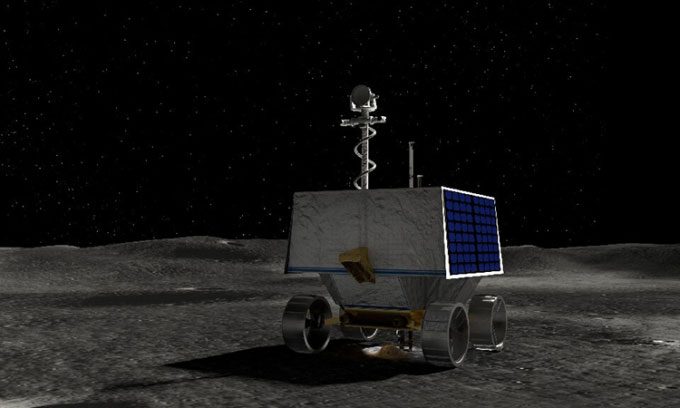On September 20, NASA announced plans to send the VIPER lander to a region known as Nobile Crater at the Moon’s south pole in 2023.
The mission of the robot is to confirm the presence of frozen water just below the surface of the Moon, which could one day be converted into rocket fuel for missions to Mars or deep space.
“Nobile Crater is a crater near the Moon’s south pole, formed after a collision with a smaller celestial body. It is one of the coldest regions in the Solar System and has only been explored remotely using sensors on orbiting spacecraft and Earth-observing satellites that monitor NASA’s lunar craters,” said Lori Glaze, NASA’s Director of Planetary Science.

Simulation of the VIPER robot operating on the Moon’s surface. (Photo: NASA)
Weighing 430 kg and roughly the size of a golf cart—1.5 meters long, 1.5 meters wide, and 2.5 meters high—VIPER differs from Mars landers in that it can be operated almost in real time, as the distance to Earth is much shorter, at about 300,000 km or 1.3 seconds light travel time.
VIPER also moves faster, reaching speeds of 0.8 km/h. It is powered by solar energy complemented by batteries that can store power for 50 hours, designed to withstand extreme temperatures and capable of adjusting its angle to capture sunlight, maximizing energy conversion efficiency.
The robot will utilize a neutron spectrometer to search for frozen water beneath the Moon’s surface, then use a drill up to 1 meter long to collect samples for analysis. NASA hopes this will reveal the origin of the frozen water on the Moon and how it has been preserved for billions of years.
The VIPER mission is part of the Artemis program, which aims to return humans to the Moon by 2024. However, recent troubles related to the launch vehicle manufacturing contract may delay the crew’s departure beyond the expected timeline.





















































